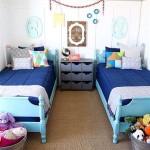Decorating Ideas For Living Room With Dark Furniture
Dark furniture in a living room can create a sense of sophistication, depth, and coziness. However, it can also make a space feel smaller and more enclosed if not styled correctly. Successful integration of dark furniture requires careful consideration of color palettes, lighting, textures, and accessories. The goal is to balance the inherent weight of the dark tones with elements that brighten and expand the living area.
The selection of suitable accent colors forms a critical part of designing a room with dark furniture. Colors interact in ways that can enhance or detract from the overall aesthetic. Considerations should also be given to flooring, wall colors, and the amount of natural light that floods the room.
Lighting is arguably the most important factor when designing with dark furniture. Dark colors absorb light, so a well-lit room is essential to prevent the space from becoming gloomy. Layered lighting, including ambient, task, and accent lighting, can help create a balanced illumination scheme.
Choosing the Right Color Palette
Selecting the right color palette is crucial for balancing the visual weight of dark furniture. Light and airy colors are often recommended to counteract the darkness and create a sense of spaciousness. However, bold, saturated hues can also work effectively when strategically employed.
Light and Neutral Tones: Light and neutral colors such as off-white, cream, beige, and pale gray are excellent options for walls and larger textiles. These colors reflect light and create a bright and airy backdrop that allows the dark furniture to stand out without overwhelming the room. To avoid a monotonous look, textures and subtle patterns can be introduced. Textured paint finishes or woven fabrics can add visual interest without compromising the light and airy feel.
Pastel Shades: Pastel shades like light blue, mint green, lavender, and blush pink can bring a touch of softness and femininity to a living room with dark furniture. These colors work particularly well with dark wood tones, creating a harmonious and inviting atmosphere. Pastel hues provide a gentle contrast that prevents the room from feeling too stark or masculine.
Warm and Earthy Tones: Warm and earthy tones such as terracotta, mustard yellow, olive green, and burnt orange can create a cozy and inviting space. These colors complement dark furniture beautifully and add a touch of warmth and richness. Earthy tones evoke a sense of nature and can make a room feel more grounded and comfortable.
Bold and Saturated Colors: While light colors are generally recommended, bold and saturated colors can also be used effectively, especially in smaller doses. Accent walls in deep jewel tones like emerald green, sapphire blue, or ruby red can add drama and sophistication to a living room with dark furniture. These colors should be used sparingly to avoid overwhelming the space.
Accent Color Application: Once a color palette is selected, careful consideration must be given to how and where these colors will be applied. Walls, rugs, curtains, throw pillows, and artwork all present opportunities to introduce color and balance the dark furniture. Generally, lighter colors should be used on the walls and larger surfaces to maximize light reflection, while darker or more vibrant colors can be used as accents to add depth and visual interest.
Mixing different shades and tones within the chosen color palette can add depth and dimension to the room. Layering various textures and patterns can also enhance the visual appeal and create a more dynamic and engaging space. The key is to create a harmonious balance between light and dark, warm and cool, and simple and complex elements.
Maximizing Light and Illumination
Given dark furniture's tendency to absorb light, strategic lighting is essential to counteract any potential gloom and create a bright and inviting atmosphere. A layered approach to lighting, incorporating ambient, task, and accent lighting, is the most effective way to achieve balanced illumination.
Natural Light: Maximizing natural light is the first step in creating a well-lit living room. Ensure that windows are not obstructed by heavy curtains or furniture. Light and airy window treatments such as sheer curtains or blinds can allow natural light to filter into the room while maintaining privacy. Mirrors can also be strategically placed to reflect natural light and make the space feel larger and brighter. Position mirrors opposite windows to amplify the effect of natural light.
Ambient Lighting: Ambient lighting provides overall illumination and sets the mood of the room. Overhead lighting fixtures such as chandeliers, pendant lights, and recessed lighting can provide general illumination. Dimmable switches allow for adjusting the intensity of the light to suit different activities and moods. Choosing light fixtures with a warm light temperature can create a cozy and inviting atmosphere.
Task Lighting: Task lighting provides focused illumination for specific activities such as reading, writing, or crafting. Floor lamps and table lamps are excellent options for task lighting. Position lamps near seating areas where targeted light is needed. Adjustable lamps allow for directing the light exactly where it is needed, providing optimal illumination for specific tasks.
Accent Lighting: Accent lighting highlights specific features or objects in the room, such as artwork, sculptures, or architectural details. Wall sconces, spotlights, and picture lights can be used to create visual interest and add depth to the space. Accent lighting can also be used to highlight textured walls or create dramatic shadows.
Light Fixture Selection: The style and finish of light fixtures can also contribute to the overall aesthetic of the room. Metallic finishes such as brass, gold, or silver can add a touch of glamour and reflect light, while matte finishes can create a more subtle and understated look. Consider the scale and proportion of light fixtures in relation to the size of the room and the furniture. Oversized fixtures can make a statement, while smaller fixtures can blend seamlessly into the background.
Bulb Selection: The type of light bulbs used can also affect the overall ambiance of the room. LED bulbs are energy-efficient and long-lasting, while incandescent bulbs provide a warm and inviting light. Choose bulbs with a color temperature that complements the overall color palette of the room. Warm white or soft white bulbs are generally recommended for living rooms to create a cozy and relaxing atmosphere.
By layering different types of lighting and carefully selecting light fixtures and bulbs, it is possible to create a well-lit and inviting living room even with dark furniture. The goal is to create a balance between ambient, task, and accent lighting to provide optimal illumination for all activities and moods.
Incorporating Texture and Pattern
Texture and pattern play a crucial role in adding visual interest and depth to a living room with dark furniture. By layering different textures and patterns, it is possible to create a more dynamic and engaging space. This will prevent the room from feeling flat or one-dimensional.
Textural Elements: Introducing a variety of textures can create a tactile and visually appealing environment. Consider incorporating materials such as velvet, leather, wool, linen, and silk. A velvet sofa can add a touch of luxury, while a wool rug can provide warmth and comfort. Linen curtains can add a touch of lightness and airiness, while silk throw pillows can add a touch of elegance. Mixing different textures can create a sense of depth and complexity.
Patterned Fabrics: Patterned fabrics can add visual interest and personality to a living room with dark furniture. Consider incorporating patterns such as stripes, florals, geometric designs, and abstract motifs. A patterned rug can anchor the room and add a focal point, while patterned throw pillows can add a pop of color and personality. Patterned curtains can soften the windows and add a touch of elegance. When choosing patterns, consider the scale and proportion of the room and the furniture. Larger patterns can make a small room feel even smaller, while smaller patterns can get lost in a large room.
Wall Textures: Wall textures can add depth and dimension to a living room with dark furniture. Consider incorporating textured paint finishes such as Venetian plaster, stucco, or faux finishes. Wallpaper with a textured pattern can also add visual interest. Wood paneling can add warmth and character, while exposed brick can add an industrial touch. When choosing wall textures, consider the overall style and aesthetic of the room.
Rugs and Carpets: Rugs and carpets can add warmth, comfort, and visual interest to a living room with dark furniture. A large rug can anchor the room and define the seating area, while smaller rugs can add pops of color and pattern. Consider the material, texture, and pattern of the rug when making a selection. Wool rugs are durable and comfortable, while sisal rugs are natural and textured. Patterned rugs can add visual interest, while solid-colored rugs can create a more understated look.
Accessories and Decor: Accessories and decor can also contribute to the overall texture and pattern of a living room with dark furniture. Consider incorporating textured vases, bowls, and sculptures. Throw blankets with knitted or woven patterns can add warmth and comfort. Artwork with interesting textures or patterns can add visual interest. The key is to create a mix of different textures and patterns that complement each other and enhance the overall aesthetic of the room.
By carefully considering the texture and pattern of different elements in the room, it is possible to create a dynamic and engaging space that is both visually appealing and comfortable. The goal is to create a balance between smooth and rough, plain and patterned, and simple and complex textures to add depth and dimension to the living room.

Bold And Beautiful Embrace The Elegance Of Black In Your Home Decor

How To Decorate Living Room Furniture Designcafe

29 Farmhouse Décor With Dark Furniture Ideas To Inspire Your Next Interior Update Farm House Living Room Brown Couch

How To Decorate A Living Room Using Black Furniture

11 Ways To Create A Bright Space With Dark Furniture

Living Room With Dark Dramatic Walls 30 Ideas Decoholic Rooms Furniture Designs

Designing And Decorating With Black White Orange County Register

16 Cozy Dark Brown Couch Living Room Ideas For Any Aesthetic
:strip_icc()/cdn.cliqueinc.com__cache__posts__212361__-2030968-1483470364.700x0c-8571e60cad7b42a981ab29ae10b5c153-497b002f87af4747b2ab38b560e7c0fd.jpg?strip=all)
How To Decorate A Living Room 20 Ideas And Common Mistakes

A Black Living Room Some Inspirations For Your Summer Interior Design
Related Posts







